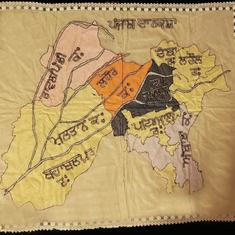There were two books that were very special to kids of my generation, who grew up in the 1960s. One was The Diary of Anne Frank and the other, To Kill a Mockingbird (though not necessarily in that order). Which perhaps explains the apparent hair-brainedness of what I once did.
Visiting New Orleans, many years ago, I looked at a map and realised that I was not very far from Monroeville, Alabama – the real name of the fictitious Deep South town of Maycomb, where To Kill a Mockingbird was set, and where, I’d heard, its author Harper Lee lived the life of a recluse. I decided I must make a pilgrimage there and try to get her to autograph a copy of her book for me.
“We call her Miss Nelle”
Monroeville is set among cotton fields and narrow, dusty country roads. When I went there it was a slow, quiet little town, with leafy, tree-lined streets and low-slung red brick buildings. Making my way to a deli near the centre of town, I ordered a Coke, and got talking to the elderly couple at the next table. Where did Harper Lee live, I asked them, after a while.
They looked rather embarassed, and then he replied, “We call her Miss Nelle. She’s not a very sociable person. I’m not sure she would appreciate a stranger coming to visit her.” When I told them that I’d come from India and just wanted to ask her to autograph my copy of to Kill A Mockingbird, they suggested that I talk to the owner of the local bookstore across the street.
The owner of the bookstore was more forthcoming. “Yes, Miss Nelle comes here to sign copies of her book for my customers, “ he said. “But I haven’t seen her for some time. I’m not sure she’s in town. She usually goes to New York at this time of the year. Let me find out.” He made a phone call, and then, hanging up, said, “My friend will check and let me know.” He offered to point out the places in town connected with the book that I could visit in the mean while.
The voice of Atticus
Just down the road was the Monroe County Courthouse, made famous by the trial scene in the book. It is now a museum, and the court-room is preserved the way it was in Harper Lee’s childhood in the 1930s. Standing there, surrounded by the judge’s bench, the tables of the prosecutor and the defence attorney, and the witness box, one can almost hear the voice of Atticus Finch exhorting the jury, “Go, in the name of god, and do your duty”, while young Scout and Calpurnia watch the proceedings from the balcony above.
Here in the court-room, every summer, the townspeople stage the play To Kill A Mockingbird, bringing it dramatically to life. And upstairs there is a display gallery commemorating Harper Lee, with another display gallery next door commemorating author Truman Capote who – by fantastic coincidence – happened to be Harper Lee’s childhood friend, and the model for Dill, one of the three children in the book.
Around the corner is the site of the house where Harper Lee’s old family house once stood. There is no plaque to commemorate that (perhaps because of Lee’s reclusiveness) – although there is a plaque next door announcing that Truman Capote came to live in that house with his aunt every summer.
Cajun catfish and hush-puppies
I had a meal at David’s Catfish House – which the friendly book-store owner had told me was one of Harper Lee’s favourite joints – ordering the Cajun catfish and hush-puppies that were the specialities of the house, I remember (although, according to the waitress, Harper Lee herself preferred the filleted catfish). And then I hurried back to the bookstore to find out what news they had for me.
When I got there the owner sympathetically shook his head. “I’m so sorry,” he said, “Miss Nelle is in New York. She is a very private person, but she would certainly have autographed her book for you. That’s one thing she always does for her readers.”
We talked about Harper Lee for a while, and her relationship with Truman Capote. He told me there was gossip that it was actually Capote who had written To Kill A Mockingbird, and that Harper Lee had merely typed it out – but that was rubbish, of course. In fact, in a sense, it was the other way around: when Capote was working on In Cold Blood, the book that had really made him famous, Lee had contributed quite significantly to it.
But there seems to have been some misunderstanding between them over the book – maybe Capote didn’t give her the credit that was due to her, who knows? – and that had fractured the long friendship between them. It was really very sad, he said.
And so I didn’t get my autographed copy of To Kill A Mockingbird, after all. The closest I came to it was to pass, on my way out of town, Harper Lee’s red brick house with the front porch, where I pictured her sitting in the long, hot Alabama nights, rocking slowly in her rocking chair, smoking Camels, and sipping on iced mint juleps.










